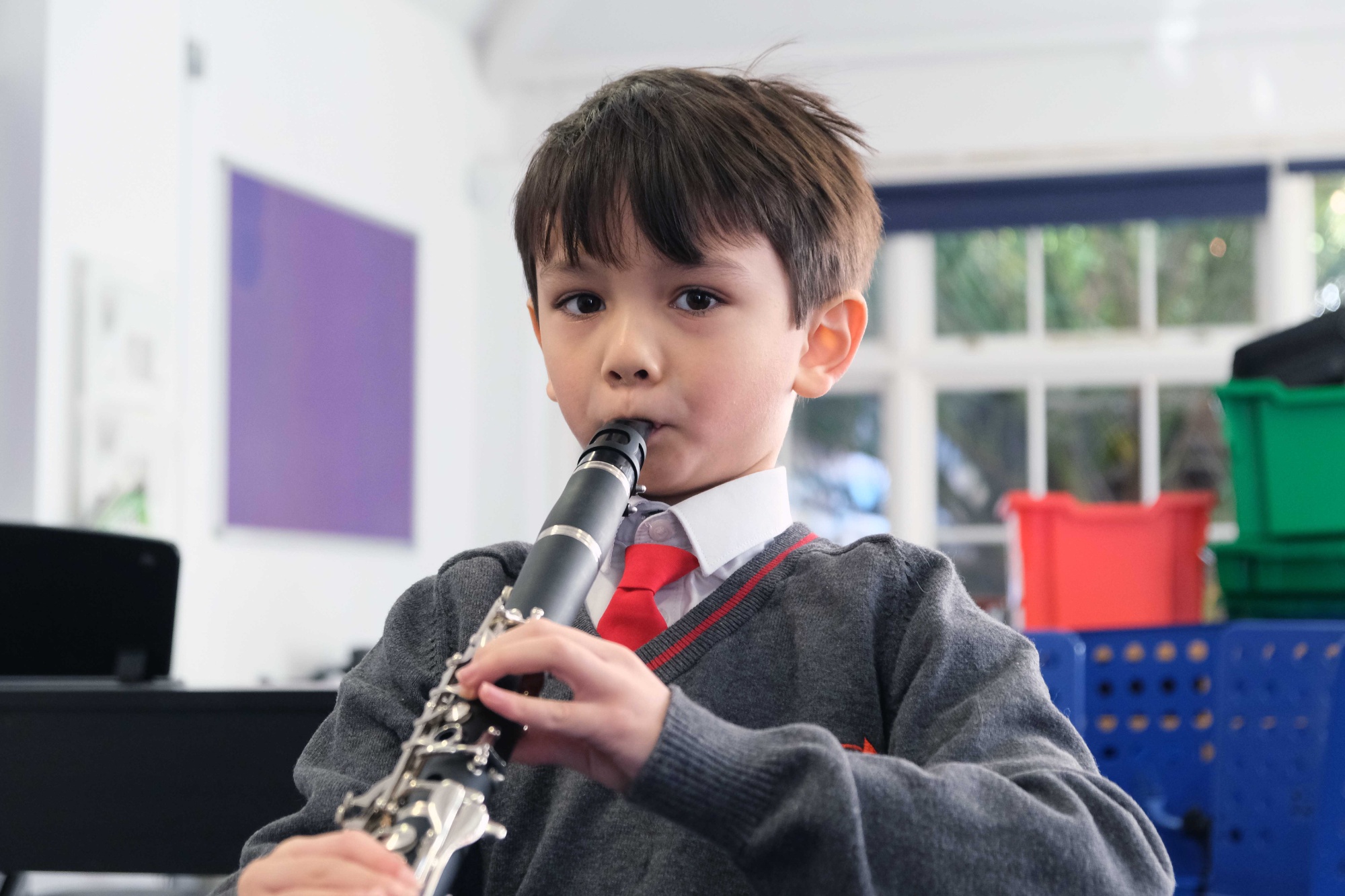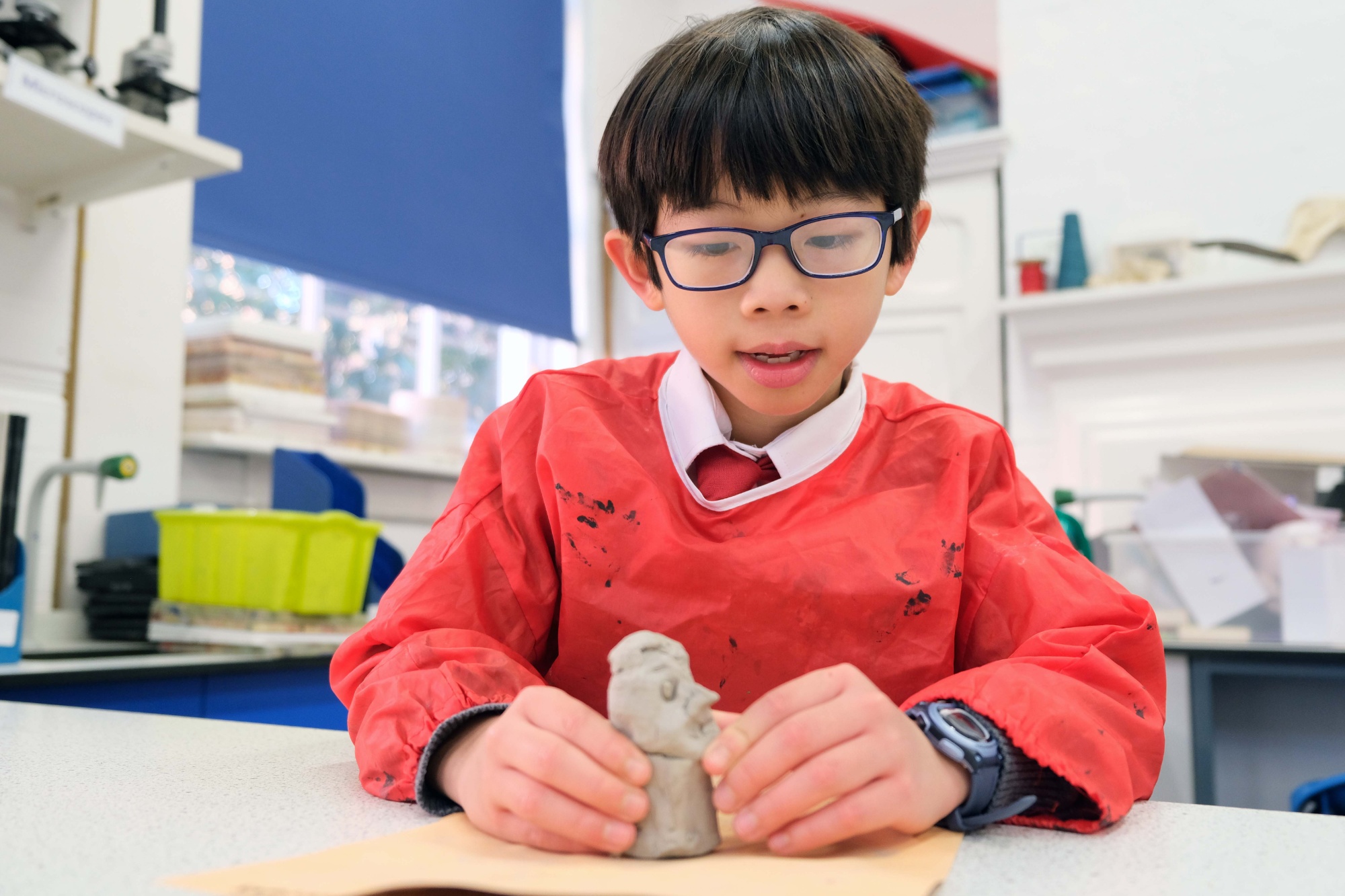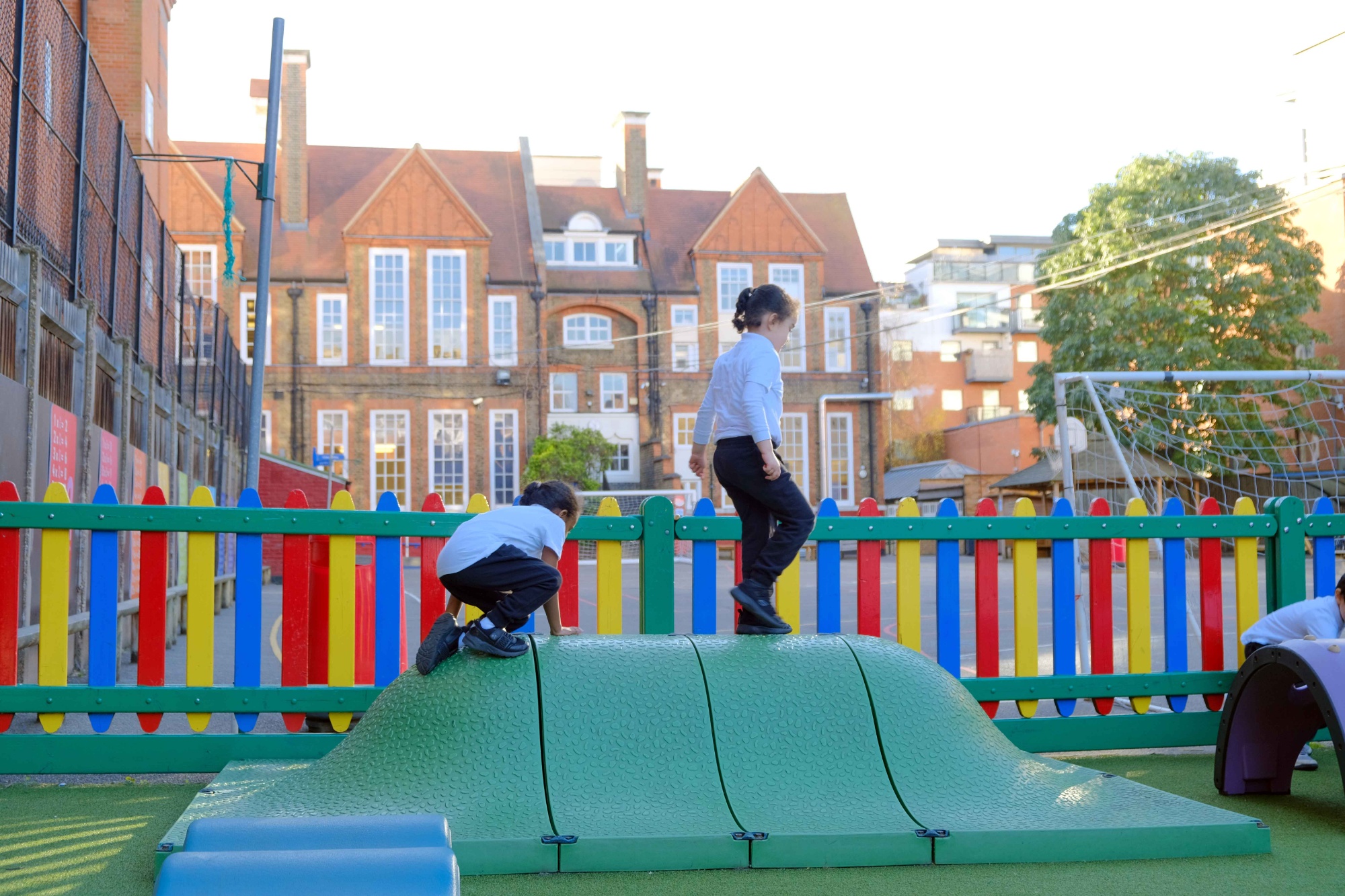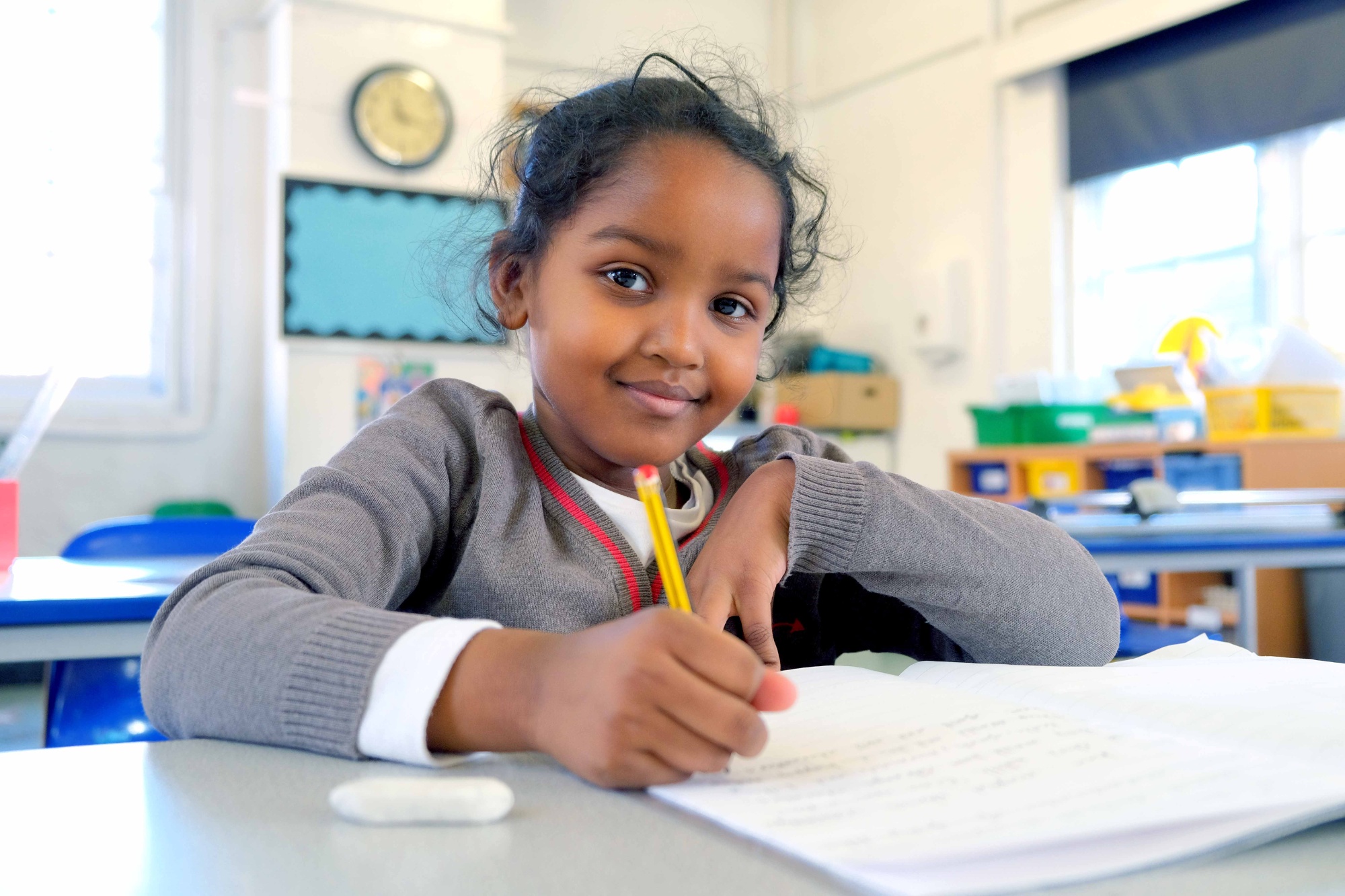Curriculum
“Our curriculum has knowledge at its heart: we want our children to experience the joy of learning, and we know that this helps them become confident, articulate and resilient young people.
All our curriculum programmes are academically ambitious, but the clear, carefully-planned teaching allows all children to succeed. We use widely-available programmes, such as Read Write Inc for phonics, where we believe they are highly effective; but more often, subject experts at our Trust’s Curriculum Centre have developed our own schemes of work, typically supported by our own textbooks, in subjects from Latin and ancient history to geography and science.
We take the time to choose carefully what knowledge to teach, prioritising that which will be of the greatest value to our children in their later lives, and we work out how to teach it in a way that helps children to remember it and to understand how different parts of the curriculum are related to each other.”
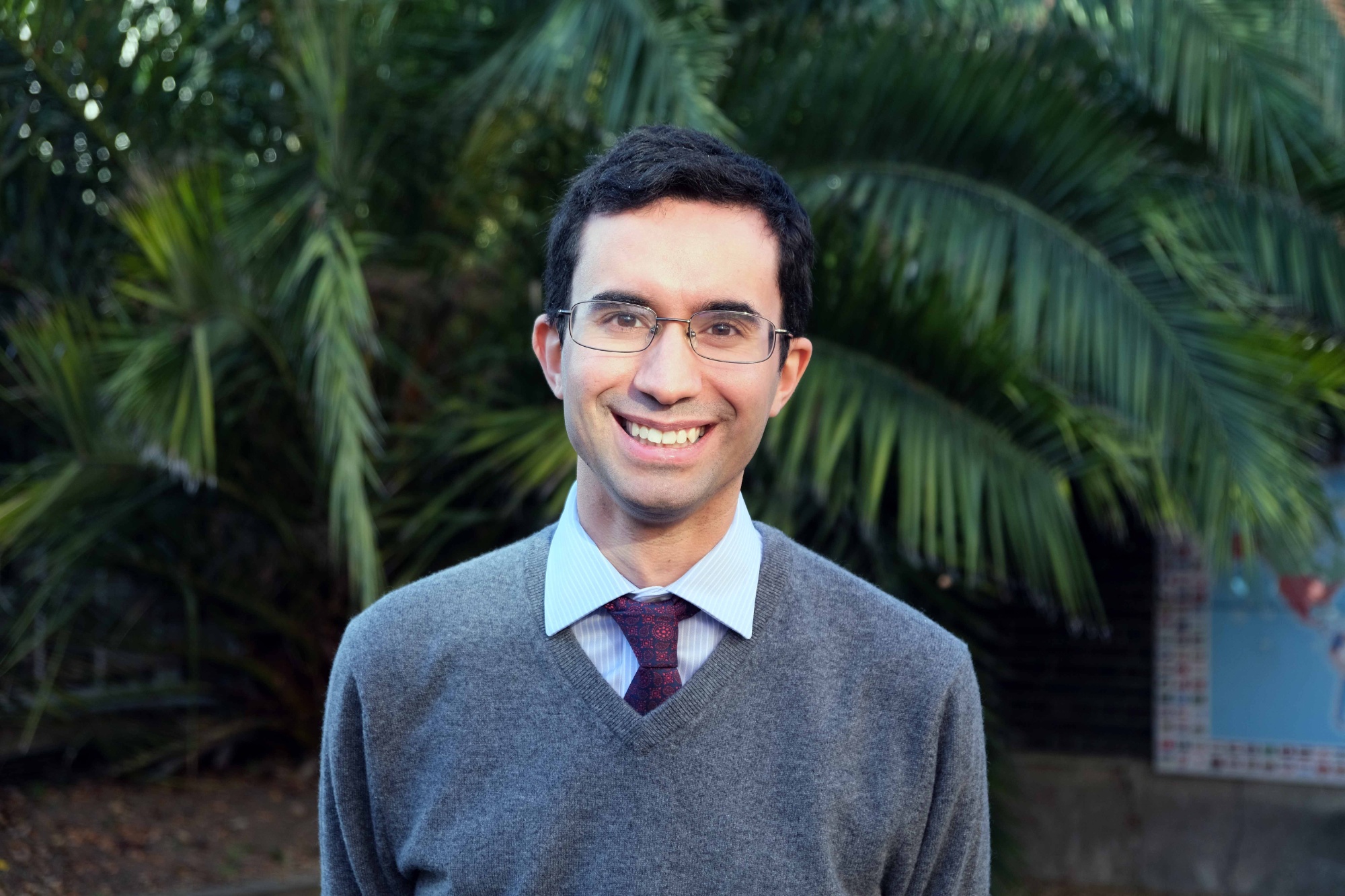
Head of School
Dr Antony Smith
English at Millbank Academy
‘Language shapes the way we think, and determines what we can think about’ Benjamin Lee Whorf
Purpose and intent
Instilling a love for reading, writing, speaking and listening whilst building proficiency in each skill is the core intention of our English curriculum. Through equipping our pupils with a robust understanding of language and literature, we intend to spark a life-long passion for literature, that enables our pupils to truly appreciate the beauty of the written word and to be able to utilise language in order to articulate their thoughts confidently and assuredly. Literacy is a key priority at Millbank Academy, as it not only enables access to the English curriculum but to the wider curriculum also. Our literature spine, the texts we commit to our pupils studying, is composed of a range of rich texts that offer a level of ‘desirable difficulty’. This means that pupils are continuously grappling with ambitious texts, that challenge their understanding and enable strong outcomes in reading, writing, speaking and listening.
Curriculum design
The English Curriculum centres around a core text, or poetry collection, for each half term/term. Through the study of this text, pupils are taught explicit vocabulary and reading strategies to navigate the text. Once pupils have a strong grasp of the text, they have the opportunity of applying their subject knowledge to composition of writing through creative writing tasks. This sequence of lessons within a unit enables pupils to grasp grammatical form, the purpose of grammar and to consider how to intentionally select literary devices in order to have a specific impact on the reader (dependant on the text type and purpose). Over the course of their learning journey in English, pupils have the opportunity to read and write texts from a range of genres, to ensure they have sufficient exposure to different text types. Disciplinary literacy takes the form of Ancient History and British History lessons that allow pupils to transfer their skills in literacy across the Humanities curriculum.
Pedagogy
Our lesson designs follow ‘The Future Way’, an approach rooted in cognitive psychology and the science of learning. The component parts of ‘The Future Way’ (recap, teach, condense, apply and review) enable teachers to deliver the curriculum to the highest possible standard and allow pupils to grasp, deepen and retain knowledge over time. Expert teaching in English (Tharby, 2017) is at the heart of exposition in our Primary English lessons.
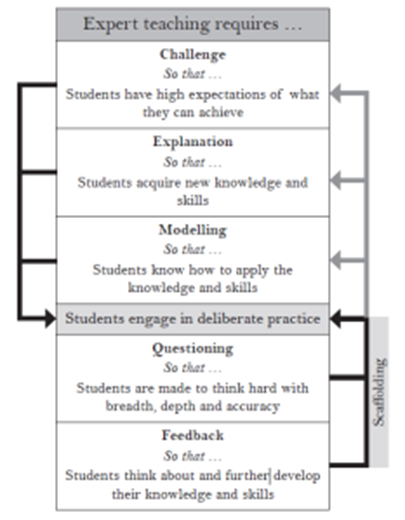
Mathematics at Millbank Academy
‘Pure mathematics is in its way the poetry of logical ideas’ Albert Einstein
Purpose and Intent
Mathematicians, are by their very nature, analytical. Through the delivery of The White Rose mathematics curriculum, we intend for our pupils to become mathematically fluent, problem-solvers, who are confident in their ability to work with number and reason logically. We intend to ensure pupils have strong groundings in Number so that they can develop the automaticity to navigate increasingly complex mathematical problems. Mathematics is not only an important discipline, in and of itself, but unlocks learning across the curriculum and therefore is a key priority in our Primary schools.
Subject Design
We utilise The White Rose scheme of work for Primary Mathematics. To learn mathematics effectively, some things have to be learned before others, e.g. place value needs to be understood before working with addition and subtraction, addition needs to be learnt before looking at multiplication (as a model of repeated addition). You will see this emphasis on number skills first, carefully ordered, throughout our primary curriculum. For some other topics, the order isn’t as crucial, e.g. Shapes and Statistics need to come after number, but don’t depend on each other. The White Rose Maths curriculum is a cumulative curriculum, so that once a topic is covered it is met many times again in other contexts- often so many that listing all is impractical. For example, place value is always covered in Autumn 1 but revisited within addition and subtraction, multiplication and division etc. Flashback Four supports teachers with spaced repetition of key topics throughout and between years.
Pedagogy
The process-driven nature of the subject, means that modelling with incision is central to our pedagogy and exposition. Individual lessons are designed in such a way that they enable pupils to develop fluency, problem-solving and reasoning within each discrete mathematical concept.
The Mastery approach which sits at the heart of The White Rose mathematics curriculum, means that ‘check for understanding’ is of critical importance in our Mathematics lessons. This enables teachers to ensure all pupils have robust fluency of facts and mathematical language before applying this to problem solving and reasoning.

Science at Millbank Academy
“Science is not only a discipline of reason but, also, one of romance and passion.” Stephen Hawking
Purpose and Intent
Our science curriculum aims to provide children with a secure knowledge and understanding of major topics in biology, chemistry and physics. This will help them to make sense of the world around them and excite their intellectual curiosity. At the same time, our children develop an understanding of how scientific advances are made, appreciating the crucial role of observations and evidence in the scientific method, both through carrying out their own enquiries and through learning about the contributions made by a range of different scientists. We prioritise children’s ability to articulate their knowledge precisely and concisely, using appropriate subject-specific terminology. Children understand the relationship between evidence and the scientific conclusions drawn from them. Including the writing types - descriptions, chronological recounts, describing differences and scientific write ups) and GRRM tasks.
Curriculum design
Our curriculum is coherent, where each lesson fits into a sequence and is designed to allow pupils to recognise science as a discipline of enquiry, underpinned by substantive and disciplinary knowledge, that seeks to explain the material world. Substantive knowledge is the knowledge of the products of science, such as concepts, laws, theories and models. This is referred to as scientific knowledge and conceptual understanding in the national curriculum. Disciplinary knowledge is the knowledge of how scientific knowledge is generated and grows. This is specified in the ‘working scientifically’ sections of the national curriculum and it includes knowing how to carry out practical procedures. Children learn how to make enquiries, conduct their own experiments and write their finding following the scientific method.
Pedagogy
Lessons follow the ‘Future Way’ model. Prior knowledge links to current or later learning and the teaching of vocabulary is explicitly carried out in lessons. Each piece of vocabulary is broken down and students are given multiple opportunities to practice new vocabulary. Exposition is clearly planned e.g. misconceptions identified, core knowledge is highlighted for students and complex ideas are made concrete and accessible. Retrieval practice is embedded in every lesson and students are given many opportunities for deliberate practice using expertly designed resources.
Geography at Millbank Academy
“Geography explains the past, illuminates the present and prepares us for the future.” Michael Palin
Purpose and Intent
In geography, children study the surface of the Earth and the people who live on it. Our intent is for the children to have an excellent knowledge and understanding of significant topics in geography and to be able to articulate their geographical knowledge precisely and concisely. Children develop their geographical skills (view, collect, interpret, analyse, draw conclusions) using maps, fieldwork, globes, atlases, OS maps, grid references, topographical mapping, photographs, satellite imagery, sketch maps, using a compass, relief models, line graphs, climate graphs.
Curriculum design
Our curriculum has a ‘spiral’ structure, meaning that the same topics are often revisited, each time in greater depth and with examples drawn from different regions of the world. As a result, children develop a secure grasp of major topics in both physical and human geography as well as of the locations of important natural and man-made features. We prioritise children’s knowledge and understanding of significant topics in physical and human geography demonstrated by their subject specific vocabulary and locational knowledge. The geography curriculum is coherent, where each lesson fits into a sequence and is designed to allow pupils to see that geography is a dynamic subject where thinking and viewpoints change. Lessons are designed to include substantive knowledge (core concept of a lesson) and disciplinary knowledge (practical aspect).
Pedagogy
Lessons follow the ‘Future Way’ model. Prior knowledge links to current or later learning and the teaching of vocabulary is explicitly carried out in lessons. Each piece of vocabulary is broken down and students are given multiple opportunities to practice new vocabulary. Exposition is clearly planned e.g. misconceptions identified, core knowledge is highlighted for students and complex ideas are made concrete and accessible. Retrieval practice is embedded in every lesson and students are given many opportunities for deliberate practice using expertly designed resources.
PSHE at Millbank Academy
Purpose and Intent
To equip our pupils with the values, virtues and compassion that is required flourish, develop a strong sense of self and make positive contributions to wider society with our Jigsaw curriculum. We aim for our pupils to develop the ability to carefully regulate their thinking, actions and behaviour and consider the impact they have on the people and world around them. We hope that by the time they graduate from Y6, they are conscientious members of the local community and wider society as well as being practically self-aware so that they can keep themselves safe both in the real world and online.
As part of our spiritual, moral, social and cultural provision, we provide students with opportunities to supplement their PSHE learning. Such opportunities include regular assemblies, whole school celebrations such as International Mother Language Day and the School Council. To enhance our student's emotional regulation, we offer external workshops delivered by organisations such as MIND and Brain Buddies. In conjunction with our extensive enrichment programme, we have visits from local community partners in Westminster to develop our student's understanding of the world around them.
Subject Design and Architecture
The PSHE curriculum consists of 6 half-term units of study (jigsaw), comprised of 6 lessons each (pieces). These are:
- Being me in my world
- Celebrating differences
- Dreams and goals
- Healthy me
- Relationships
- Changing me
Pedagogy
Our lesson designs follow ‘The Future Way’, an approach rooted in cognitive psychology and the science of learning. The component parts of ‘The Future Way’: recap, teach, condense, apply and review enable teachers to deliver the curriculum to the highest possible standard and allow pupils to grasp, deepen and retain knowledge over time. The study of PSHE is supported, where appropriate, by case studies, scenario work and connections to reference points, so that pupils can readily apply their understanding to their day-to-day lives.
Art at Millbank Academy
“Creativity takes courage.” – Henri Matisse
“You can’t use up creativity. The more you use, the more you have.” –Maya Angelou
Purpose and intent
Our art curriculum helps children to develop a love of art. We introduce them to major artistic movements and artefacts, and we teach them the vocabulary and knowledge they need to describe, to appreciate and to understand them. Alongside this, pupils become proficient in a range of fundamental artistic techniques. They use these skills to produce creative artwork of their own, through which they can record or respond to experiences and issues, and explore their own ideas. We lend on opportunities within our locality to offer pupils the experience of ‘Art in Action’ including making connections with local art galleries and exhibitions.
Subject design
We provides opportunities for pupils to be both artists and art critics as they make and study art. Each scheme of work, taught over half a term, is inspired by a key image, artefact or movement. Students study this in depth and learn subject specific vocabulary relevant to that image, genre and artist. This ensures that pupils have a repertoire of artistic knowledge varying from more granular artistic techniques, to the broader chronology of artistic evolution over time. Pupils will study theoretical knowledge and then use this knowledge to support the development of artistic skill.
Pupils produce practical work in drawing, painting, collage, printing, sculpting and textiles, building on prior learning and developing personal responses to the key images. They are encouraged to speak about art commenting on the use of formal elements as well as narrative and story- telling.
Links are made across the curriculum, where appropriate, to offer pupils to develop strong schemas. For example, in Year 3, pupils study the design of ‘The Scarab Pectoral’, alongside study of Ancient Egypt. In doing this, pupils are able to make connections across the curriculum in order to reinforce their understanding of place and time and the role that art plays in punctuating this.
Pedagogy
The curriculum is progressive and allows children to build on and apply skills and techniques year on year. It enables children to revisit familiar areas, including analysis of art, with planned extension and development. Our lesson designs follow ‘The Future Way’, an approach rooted in cognitive psychology and the science of learning. The component parts of ‘The Future Way’: recap, teach, condense, apply and review enable teachers to deliver the curriculum to the highest possible standard and allow pupils to grasp, deepen and retain knowledge over time.
Pupils demonstrate their evolving artistic skill in their sketchbooks, in sculpture and modelling, and complete work on a larger scale. This is complimented by theoretical and contextual study of artwork. Together these compose a pupil’s ‘Art Portfolio’.
Music at Millbank Academy
Purpose and Intent
The National Curriculum for Music aims to ensure that all children:
learn to perform, listen to, review, and evaluate music; learn to sing, create, and compose music; understand and explore how music is created, produced, and communicated.
Music teaching at Future Academies Primary Schools is guided by the National Curriculum and provides a broad, balanced and differentiated curriculum that ensures the progressive development of an understanding of the musical elements: pitch (including melody, harmony, tonality) duration (pulse, rhythm, and tempo), dynamics, timbre, and structure.
We endeavour to develop a curiosity for the subject as well as an understanding and acceptance of the validity and importance of all types of music and an unbiased respect for the role that music can play in everyone’s life. We believe that music plays an essential role in making children feel part of a community. Therefore, we offer all children the opportunity to create, play, perform and enjoy music at home, in class and in front of an audience.
Our music curriculum ensures that children sing, listen, play, perform and evaluate. This is realised in the classroom through our structured music lessons, singing assemblies, various concerts, performances and music clubs, as well as teaching by specialist teachers.
The elements of music are taught in music lessons each week so that children can use some of the language of music to dissect and understand how it is made, played, appreciated and analysed. In the lessons, children learn to play the glockenspiel, the recorder and a range of percussion instruments. By playing different instruments, children use a range of methods to produce notes and learn how to read basic music notation. They also learn how to compose, focusing on different dimensions of music, which in turn develops their understanding when listening to, playing, and analysing music. Composing or performing with body percussion and vocal sounds is also part of the curriculum, developing an understanding of musical elements without the added complexity of an instrument.
Subject Design and Architecture
Music in the Early Years
Music is an integral part of our Early Years curriculum. Children enjoy singing activities and sing nursery rhymes, number rhymes as well as a range of simple songs led by our music teaching specialist and the early years staff team. They use percussion instruments to accompany songs as well as composing their own music using instruments. In addition, musical instruments are available within the learning environments for the children to access and explore as part of our continuous provision.
Music in Key Stages 1 and 2
We are guided by the National Curriculum for Music across Key Stages 1 and 2. When children leave Key Stage 2, we expect them to be able to:
- Perform, listen to, review, and evaluate music across a range of historical periods, genres, styles, and traditions, including the works of the great composers and musicians.
- Learn to sing and to use their voices, to create and compose music on their own and with others, learning a musical instrument, using technology appropriately to progress to the next level of musical excellence.
- Understand and explore how music is created, produced, and communicated, including through the musical elements: pitch, duration, dynamics, tempo, timbre, texture, structure, and appropriate notations.
Children in Year 4 all learn to play the violin, clarinet or trumpet; they can then continue this into Year 5 and beyond. This tuition is delivered by a peripatetic music teacher.
By the end of Key Stage 2, children will have had opportunities to play and perform using their voices and musical instruments with increased accuracy, fluency, control and expression. They will be to improvise and compose music for a rage of purposes and use musical notation accurately. They have opportunities to listen to a range of music from different traditions, genres and from the great composers and musicians. Through these opportunities, children begin to develop and understanding of musical history.
Singing Assemblies
There are regular singing assemblies in both Key Stage 1 and Key Stage 2. The assemblies are led by our specialist music teacher and are an opportunity for the children to learn and perform a range of songs for enjoyment. It is also a time for children to listen and appraise music they have heard. Children also have the chance to showcase their singing skills in other achievement assemblies.
Cross Curricular Links
The teaching of Music enhances other curriculum areas. It is the specialist music teacher’s responsibility to bridge other areas of the curriculum to Music, broadening the pupil’s experiences and linking to real life experiences where possible.
Inclusion
Future Academies Primaries are committed to ensuring that all our pupils have equal opportunities in all areas of school life, including music. Our aim is to provide an inclusive music experience that meets the needs and abilities of all pupils. We ensure that all students could raise their self-esteem and celebrate their successes so that they can realise their full potential.
Pedagogy
The most important aspect of our music teaching pedagogy is that students learn and understand the concepts of music through active engagement. For example, children first understand pulse in music through listening, performing and moving to music with a pulse.
Our lesson designs follow ‘The Future Way’, an approach rooted in cognitive psychology and the science of learning. The component parts of ‘The Future Way’: recap, teach, condense, apply and review enable teachers to deliver the curriculum to the highest possible standard and allow pupils to grasp, deepen and retain knowledge over time.
Computing at Millbank Academy
Technology has become a part of everyday life for the children, families, and staff at Millbank Primary Academy. Our intent, as a school community, is to equip our children with the knowledge, skills and understanding of computing that is necessary for them to successfully navigate through an ever-changing digital world. Our Computing curriculum is designed to allow children to learn about technology and its uses, develop computing skills, and apply what they have learnt in all areas of the curriculum and daily life.
The Computing curriculum is comprised of three strands: Computer Science, Information Technology, and Digital Literacy. Together these strands come together to teach children how computers and computer systems work, how to design, build and analyse programs, and how to find and manage digital information securely.
This includes lessons in coding and debugging computer programs in order to understand how computers and their systems work; online research, including evaluating sources for credibility; word and data processing; opportunities for creative expression through the creation of videos, websites, and animations; and lessons in online safety and data protection.
In order to meet our computing objectives and include ambitious and engaging cross-curricular learning experiences, we are well resourced with many digital resources such as computers, tablets, digital cameras, microscopes and handheld devices.
Intent
In line with the 2014 National Curriculum for Computing, our aim is to provide a high-quality computing education which equips children to use computational thinking and creativity to understand and change the world. The curriculum will teach children key knowledge about how computers and computer systems work, and how they are designed and programmed. Learners will have the opportunity to gain an understanding of computational systems of all kinds, whether or not they include computers.
By the time they leave our school, children will have gained key knowledge and skills in the three main areas of the computing curriculum: computer science (programming and understanding how digital systems work), information technology (using computer systems to store, retrieve and send information) and digital literacy (evaluating digital content and using technology safely and respectfully). The objectives within each strand support the development of learning across the key stages, ensuring a solid grounding for future learning and beyond.
Implementation
At our school, computing is taught by building skills over time. This ensures children are able to develop depth in their knowledge and skills over the duration of each of their computing topics. Teachers use our own curriculum scheme based on Teach Computing and Project Evolve, as a starting point for the planning of their computing lessons, which are often richly linked to engaging contexts in other subjects and topics. Knowledge and skills are mapped across each topic and year group to ensure systematic progression. We have a computing suite to ensure that all year groups have the opportunity to use a range of devices and programs for many purposes across the wider curriculum, as well as in discrete computing lessons. Employing cross-curricular links motivates pupils and supports them to make connections and remember the steps they have been taught.
The implementation of the curriculum also ensures a balanced coverage of computer science, information technology and digital literacy. The children will have experiences of all three strands in each year group, but the subject knowledge imparted becomes increasingly specific and in depth, with more complex skills being taught, thus ensuring that learning is built upon. For example, children in Key Stage 1 learn what algorithms are, which leads them to the design stage of programming in Key Stage 2, where they design, write and debug programs, explaining the thinking behind their algorithms.
Impact
Our approach to the curriculum results in a fun, engaging, and high-quality computing education. Evidence from lessons is used to feed into teachers’ future planning, and as a topic-based approach continues to be developed, teachers are able to revisit misconceptions and knowledge gaps in computing when teaching other curriculum areas. This supports varied paces of learning and ensures all pupils make good progress.
Much of the subject-specific knowledge developed in our computing lessons equip pupils with experiences which will benefit them in secondary school, further education and future workplaces. From research methods, use of presentation and creative tools and critical thinking, computing at our school gives children the building blocks that enable them to pursue a wide range of interests and vocations in the next stage of their lives.
Design Technology at Millbank Academy
Design and Technology is a way of learning, which spans and links the whole curriculum. In primary school it has its roots in imaginative play, art and science. We want all children at Millbank Primary School to think innovatively, to question and explore the practical world around them and to develop a positive and passionate approach to their learning, through creative design because at Millbank Primary everyone learns, everyone achieves and everyone matters! Teaching staff lead design technology lessons with a no ceiling approach to adaptive teaching taking into consideration the needs of all children including those with SEND, enabling our pupils to access our challenging curriculum and to feel confident in their design decisions. Children understand how to apply their technical knowledge and justify their design decisions using key vocabulary, initial designs, mock-ups, prototypes and functional products from the conceptual through to the constructional, avoiding design fixation. We want to instil this ethos at the heart of all good design - to design, test, make and evaluate.
We aim to help our children at Millbank Primary to develop enjoyment and pride in their technological and creative abilities; a keen and passionate interest in creating functional and user-focused designs and products; communication, cooperation and collaboration skills; confidence, perseverance and the ability to critically self-reflect and evaluate their design decisions, making valuable connections across the curriculum. We want children to challenge themselves with innovative and bold design, applying an iterative, problem-solving approach alongside critical thinking to show a deeper understanding of the design process.
Implementation
Using the National Curriculum for Design and Technology, the development of Design and Technology proficiency at Millbank Primary is achieved through opportunities and experiences across a broad curriculum. The curriculum enables pupils to take part in a wide range of practical activities directly concerned with:
- identifying needs
- generating ideas
- planning and designing
- making and testing
- evaluating and reflecting
All of these key disciplinary skills are realised through design projects which explore and use of a variety of mediums and materials such as textiles, construction, sheet materials, mechanisms and cooking and nutrition.
Following an iterative design process is key to enabling children to evaluate and adjust their designs and products. We achieve this though various approaches such as:
- the use of handling displays for children to explore existing designs and products
- well-structured lessons allowing time for exploration, discussion, practise and research
- designing a product for a specific audience or 'client' in mind
- cross-curricular links that allow children to make connections between subjects and with real-life situations and problems that may need a design solution.
The Design and Technology curriculum continues to be developed, improved and reviewed in order to offer the most up to date, exciting and challenging lessons for all children. Through a considered curriculum, teachers can ensure that children at Millbank Primary build upon the skills and knowledge acquired in KS1, gaining confidence and a deeper understanding as they progress through KS2 equipping them with the vital skills they will need going into KS3 and beyond.
Impact
To assess that children have learnt more and remember more as they move through the design process, assessment for learning is embedded deeply across the school and can be seen in all year groups and in all lessons, meeting the needs of all children. Pupils regularly share their design decisions through teacher-led and peer-based discussions. Children can demonstrate their understanding and develop their technical design skills demonstrating various points in the design cycle in working sketch/design books, reworking ideas and evaluating prototypes.
Physical Education at Millbank Academy
At our school, we believe that Physical Education represents a very important contribution to a child’s development by fostering in them positive attitudes towards sharing, co-operation and competition. Our commitment to the subject and to providing our children with a wide range of opportunities to enjoy and to achieve success in sports is reflected in our achieving 'Gold' in the School Games Mark award scheme several years in a row.
We aim to develop our pupils’ self confidence and self-esteem through a wide variety of experiences both in curriculum time, extra-curricular opportunities and competition in and out of school.
In both Key Stage 1 and 2 children are taught a range of sports including Gymnastics, Dance, Athletics, Invasion games and Basketball. These form core activities of the PE Curriculum.
We also run extra-curricular sporting activities across both key stages, dependent upon the time of year.
The school competes in many local competitions. We have many fantastic teams as well as sporting talent across the Academy.
All physical education experiences are intended to meet all abilities and offer stimulating and challenging learning. We also aim to promote the values of exercise & enthusiasm for physical activities and to promote a lifelong interest in physical education as a whole.
Greenhouse Sports
We work in partnership with Greenhouse Spors to ensure we can provide the very best sporting environment for all our pupils. Our joint vision is to ensure that sport for personal development is at the heart of what we do. We set the bar higher than just accepting that participants learn fundamental skills for physical development and life simply by taking part in activity. Whilst learning is implicit in sport to a certain extent, we challenge ourselves to explicitly deliver outcomes for young people by delivering well planned, deliberate, and methodical curricular and extra-curricular sessions. The intended outcomes are illustrated using our STEP framework (Social, Thinking, Emotional, Physical).
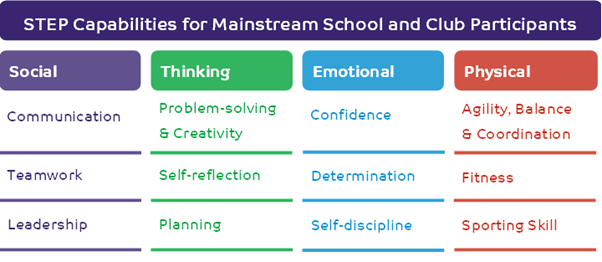
To find out more about the school's curriculum, please contact Dr Smith via the school office (office@millbank.futureacademies.org).

